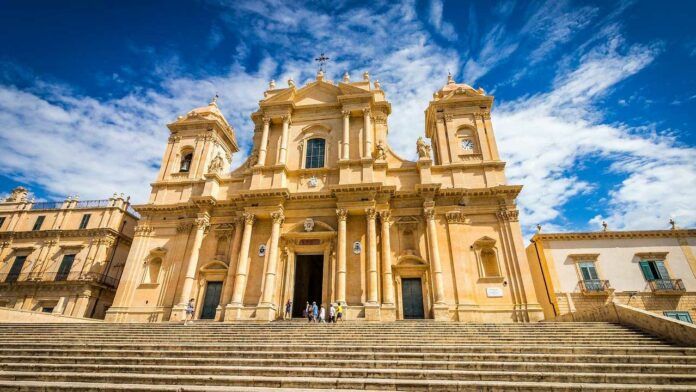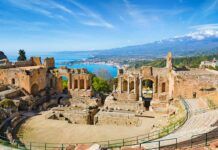Among sumptuous palaces, ornate churches, stone architecture and mazes of narrow streets, the cities of Val di Noto enchant for their baroque wonders, enclosed between the hills and the sea.
The eight cities of Caltagirone, Militello Val di Catania, Catania, Modica, Noto, Palazzolo, Ragusa and Scicli, located in the southeast of Sicily, some of which are recognized as UNESCO World Heritage Sites, make up the geographical area known as Val di Noto.
Today the beating heart of Baroque in Italy, as well as the highest expression of Sicilian Baroque, Val di Noto has an ancient history. Starting from the Norman domination around the twelfth century, until 1812 in fact, the administrative district called Vallo di Noto dealt with justice and the treasury of the ancient Kingdom of Sicily. The history of its most visited places, however, is not as ancient. All the towns of the Val di Noto, in fact, were razed to the ground by a violent earthquake, which in 1693 erased forever the historical and architectural memory of the cities. Just to the reconstruction of the cities between the seventeenth and eighteenth centuries we owe the current appearance, designed in late Baroque style to give life to real works of art in the open air.
Although united by palaces with imposing volumes, churches with precious interiors, in which the volutes typical of the Baroque join rich decorations, the late Baroque cities of the Val di Noto are distinguished by the different materials used for construction. If the main buildings of Catania are dominated by the dark grey deriving from the lava stone used, the churches and the symbolic places of Noto assume the honey color of the local stone, as a proof of the strong link with the surrounding territory.
If Ragusa, and in particular the district of Ibla, is known to preserve more than 50 wonderful examples of Baroque architecture, including churches such as the Cathedral of San Giorgio, palaces and symbolic places of the city, such as Santa Maria delle Scale or the Iblo Garden, the city of Caltagirone is famous instead for its colorful ceramics, the pride of local craftsmanship. They can be found in many local artisan stores, scattered here and there among cathedrals and high towers, and even as decorative elements of the famous staircase of Santa Maria del Monte.
Not far away, the town of Modica – famous also for its delicious chocolate, the result of a particular cold processing – is an urban center of rare beauty. Here, two city centers coexist: the most ancient one is perched on the top of a hill, whereas the most recent one, was built in the valley after the earthquake. No less beautiful is the monumental baroque town of Scicli, similar to an open-air crib and built entirely with the candid local stone. Among the remains of ancient castles, caves, rock churches and beautiful cathedrals, the center of Scicli surprises for the sinuous alternation of late baroque volumes all to discover.









